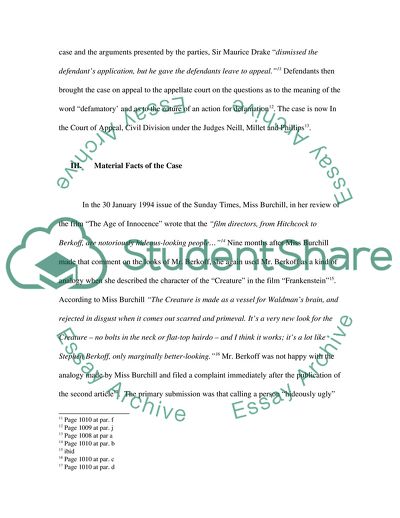Cite this document
(Berkoff v Burchill - Defining the Scope of Defamatory Statement Case Study, n.d.)
Berkoff v Burchill - Defining the Scope of Defamatory Statement Case Study. Retrieved from https://studentshare.org/law/1707373-write-a-case-note-based-solely-on-the-copy-of-berkoff-v-burchill-1996-4-all-er-1008
Berkoff v Burchill - Defining the Scope of Defamatory Statement Case Study. Retrieved from https://studentshare.org/law/1707373-write-a-case-note-based-solely-on-the-copy-of-berkoff-v-burchill-1996-4-all-er-1008
(Berkoff V Burchill - Defining the Scope of Defamatory Statement Case Study)
Berkoff V Burchill - Defining the Scope of Defamatory Statement Case Study. https://studentshare.org/law/1707373-write-a-case-note-based-solely-on-the-copy-of-berkoff-v-burchill-1996-4-all-er-1008.
Berkoff V Burchill - Defining the Scope of Defamatory Statement Case Study. https://studentshare.org/law/1707373-write-a-case-note-based-solely-on-the-copy-of-berkoff-v-burchill-1996-4-all-er-1008.
“Berkoff V Burchill - Defining the Scope of Defamatory Statement Case Study”, n.d. https://studentshare.org/law/1707373-write-a-case-note-based-solely-on-the-copy-of-berkoff-v-burchill-1996-4-all-er-1008.


